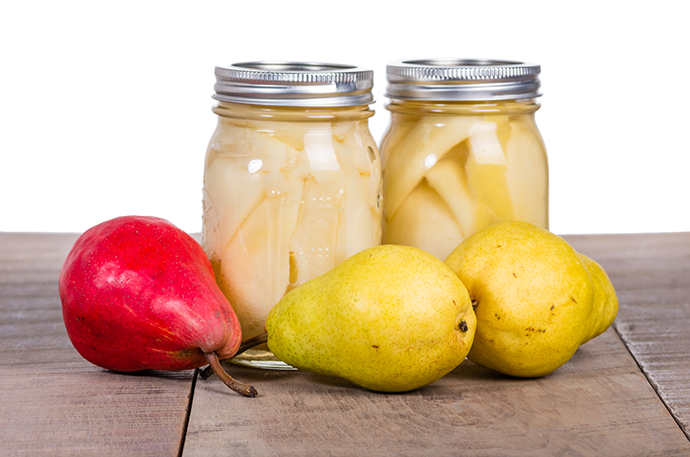Ask an Expert: Five Tips for Proper Food Preservation
 How can you be sure the food you preserve at home and place on food storage shelves is safe for your family to eat? Consider these five tips when preserving food.
How can you be sure the food you preserve at home and place on food storage shelves is safe for your family to eat? Consider these five tips when preserving food.
1) Proper temperature
Boiling water method - kills most molds and air-borne bacteria in high-acid foods such as fruits, fruit juices and pickles. Steam canners may be used in place of a boiling water bath under specified conditions.*
Steam under pressure method - kills anaerobic organisms like those that cause botulism in low-acid foods such as vegetables and meats.
Note that tomatoes may be processed in a water-bath canner with the addition of an acid such as vinegar or lemon/lime juice.
2) Correct amount of processing time
This is scientifically determined, and as altitude increases:
- Boiling water - time must be increased.
- Steam under pressure - pressure must be increased.
3) New jar lids with screw bands that seal properly
- New two-piece metal lids with sealing compound are recommended.
- Screw bands may be reused multiple times if free of corrosion and dents.
- A good seal means lids have indented and cannot be removed easily.
4) Up-to-date, approved recipes
“Approved” doesn’t mean it is endorsed by a favorite friend or relative. Canning is a science; not an art. Therefore, only use recipes from the following sources:
- USDA Complete Guide to Home Canning
- National Center for Home Food Preservation (http://nchfp.uga.edu )
- So Easy to Preserve (Published by University of Georgia Extension)
- Ball Blue Book Guide to Preserving
5) Current, approved food preservation methods
- For canning, only two methods are approved:
- Boiling water bath
- Steam pressure canning
- Steam canner - For high acid foods only and for 45 minutes or less processing time.*
- Other approved methods of food preservation include dehydration, freezing and smoking/curing.
*For guidelines on using steam canners, contact your local USU Extension office or review this article endorsed by USDA and the National Center for Home Food Preservation.
*For information on using the alternitive food preservation of freeze drying visit this article.
By: Kathy Riggs, USU Extension professor, kathleen.riggs@usu.edu; (435) 586-8132What Next?
Get useful tips like this as soon as we release them. Sign up here.


 Utah 4-H & Youth
Utah 4-H & Youth